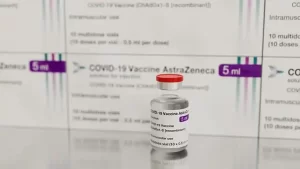Opioid Addiction Treatment Strategies: Increasing Buprenorphine
- Global First: Bovine Avian Influenza Transmission to Humans Detected
- Potassium-Enriched Salt Substitutes: Reducing Blood Pressure Risk?
- Tritium Detection in Fukushima’s Seawater: Below Safety Standards
- What Reason Let AstraZeneca Withdraws COVID Vaccine From The Market?
- How Many Times Can a Cancer Patient Undergo Chemotherapy?
- What are the WHO recommendations for Japanese encephalitis vaccines?
Opioid Addiction Treatment Strategies: Researchers Advocate for Increased Dosing of Buprenorphine
- AstraZeneca Admits for the First Time that its COVID Vaccine Has Blood Clot Side Effects
- Was COVID virus leaked from the Chinese WIV lab?
- HIV Cure Research: New Study Links Viral DNA Levels to Spontaneous Control
- FDA has mandated a top-level black box warning for all marketed CAR-T therapies
- Can people with high blood pressure eat peanuts?
- What is the difference between dopamine and dobutamine?
- How long can the patient live after heart stent surgery?
Change in Opioid Addiction Treatment Strategies: Researchers Advocate for Increasing Dosing of Buprenorphine
A new study led by researchers from Brown University suggests a need to reevaluate addiction treatment recommendations for opioid substances in the era of fentanyl.
Recent findings indicate that patients with opioid use disorder who receive lower doses of buprenorphine are 20% more likely to complete treatment compared to those receiving higher doses.
Given the current opioid crisis and the dominance of fentanyl, this study calls for a reassessment of buprenorphine dosing guidelines.

This research was recently published in the JAMA Network Open and primarily focused on patients in Rhode Island between 2016 and 2020. During this period, the potent prescription opioid fentanyl saw a surge, leading to increased overdoses and deaths. The study was spearheaded by experts from Brown University, the National Institute on Drug Abuse, and the Rhode Island Department of Health.
Dosing Details and Patient Responses
During the study, participants who initiated buprenorphine treatment for opioid abuse were prescribed daily doses of 16 milligrams in 59% of cases and 24 milligrams in 53% of cases, with treatment completed within 180 days. The FDA recommends a daily dose of 16 milligrams. Complex comparisons between these two groups of patients revealed that those taking the recommended FDA dose were significantly more likely to discontinue treatment within 180 days compared to those taking the 24-milligram dose. Multivariate comparisons of these two study groups showed a much greater likelihood of treatment discontinuation within 180 days for patients taking the 24-milligram dose.
It’s worth noting that the recommended daily dose was established before the widespread appearance of fentanyl. Researchers emphasize the need to reassess these guidelines due to significant changes in the landscape.
The Importance of Updating Treatment Approaches
Dr. Francesca Beaudoin, the lead author of the study and a professor of epidemiology and emergency medicine at Brown University, states, “Medications like buprenorphine for treating opioid use disorder can save lives, but only if people start taking them and stick with them. These medications have been around for a long time, but fentanyl has not. We must reevaluate and update treatment guidelines to address today’s opioid crisis, or else lives are at risk. This study suggests that individuals prescribed higher doses of buprenorphine tend to adhere to treatment for a longer duration.”
Researchers note that medications for treating opioid use disorder, including buprenorphine, can effectively and safely help reduce opioid use and overdose by decreasing cravings and alleviating withdrawal symptoms, aiding in patient recovery. Their findings build upon accumulating evidence of the safety and effectiveness of higher-dose buprenorphine for opioid use disorder patients in emergency room and outpatient treatment settings.
The Rise of Fentanyl and Its Impact on Current Treatment Guidelines
In 2021, among nearly 107,000 overdose deaths reported, over 70,000 were primarily attributed to fentanyl. This potent synthetic opioid is approximately 50 times more potent than heroin. Its ubiquity in the drug supply and the resulting increase in drug overdose deaths have raised questions about whether existing dosing guidelines for buprenorphine should be modified to better address the unique challenges posed by this potent opioid.
“Medications for treating opioid use disorder have been around for a long time, but fentanyl has not. We must reevaluate and update treatment guidelines to address today’s opioid crisis, or else lives are at risk,” says Dr. Francesca L. Beaudoin, director of the Department of Epidemiology at the Brown University School of Public Health and an M.D.
Currently, FDA-approved labeling stipulates a maintenance dose ranging from 4 to 24 milligrams, with a recommended target dose of 16 milligrams per day for most patients. Treatment dosages also vary significantly based on individual needs and response to the medication. Dr. Rachel Whiteman, an author of the study and an associate professor of emergency medicine and epidemiology at the Warren Alpert Medical School of Brown University, notes, “The recommended target dose for buprenorphine was established before the widespread use of fentanyl. Our study suggests that increasing buprenorphine dosages may improve treatment outcomes for these individuals. We have a responsibility to help patients succeed.”
Analyzing Previous Data and Future Steps
In this study, researchers retrospectively examined data from 6,499 Rhode Island residents who initiated buprenorphine treatment for opioid use disorder between 2016 and 2020, a period coinciding with the emergence and dominance of fentanyl. Their goal was to estimate the relationship between patients’ daily buprenorphine dosages and their rate of treatment retention at 180 days, which aligns with the minimum treatment duration for measuring opioid use disorder treatment continuity by the U.S. Centers for Medicare and Medicaid Services.
Most patients were males between the ages of 25 and 44 with private or Medicaid insurance. Approximately 21% of patients (1,343 individuals) were prescribed an 8-milligram dose when initiating buprenorphine treatment, 50% (3,264 individuals) received a 16-milligram dose, and 10% (668 individuals) received a 24-milligram dose. Patients receiving doses exceeding 24 milligrams during the study period were few (0.2%, or 15 patients) and, therefore, were not included in the analysis.
Patients prescribed a 24-milligram dose of buprenorphine tended to continue treatment for a longer duration compared to those prescribed the recommended 16-milligram dose, with the latter group having a 20% higher likelihood of discontinuing treatment.
The research team plans to further investigate this study in the future, aiming to launch a clinical trial assessing the effects of daily buprenorphine dosages up to 24 milligrams on improving treatment retention and reducing the risk of overdose and death. In this trial, researchers will also investigate the role of other factors potentially associated with treatment retention, including clinical prescribing practices and patients’ sociodemographic and living conditions. The trial results will ultimately contribute to updated standards for treating opioid use disorder.
(source:internet, reference only)
Disclaimer of medicaltrend.org
Important Note: The information provided is for informational purposes only and should not be considered as medical advice.



